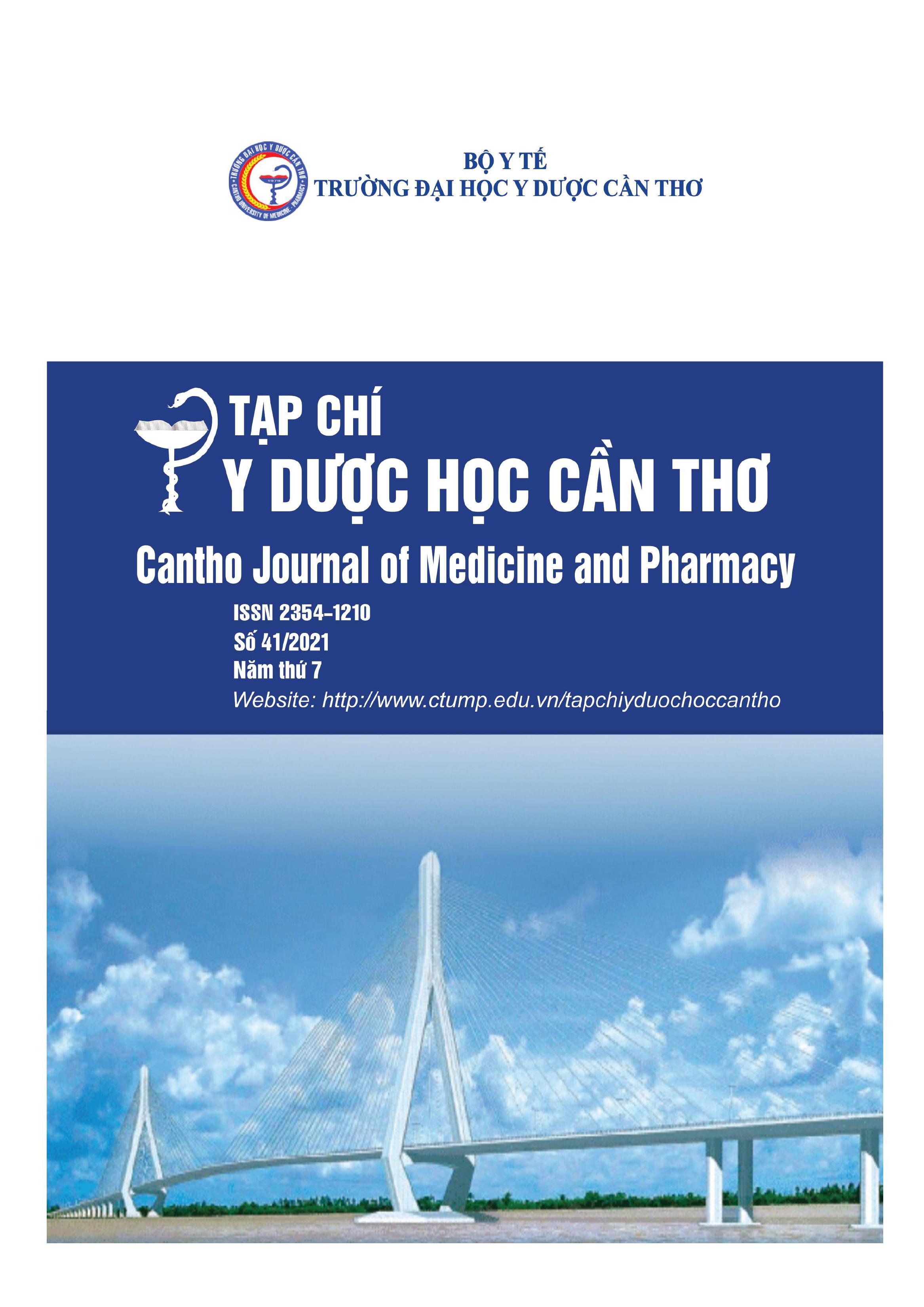ĐÁNH GIÁ KẾT QUẢ ĐIỀU TRỊ GÃY ĐẦU DƯỚI 2 XƯƠNG CẲNG CHÂN BẰNG PHẪU THUẬT KẾT HỢP XƯƠNG NẸP KHÓA TẠI BỆNH VIỆN QUÂN Y 121
Nội dung chính của bài viết
Tóm tắt
Đặt vấn đề: Phẫu thuật kết hợp xương bằng nẹp khóa vẫn được xem là tiêu chuẩn điều trị gãy đầu dưới 2 xương cẳng chân. Mục tiêu nghiên cứu: Đánh giá kết quả điều trị gãy đầu dưới hai xương cẳng chân bằng phẫu thuật kết hợp xương nẹp khóa tại Bệnh viện Quân y 121. Đối tượng và phương pháp nghiên cứu: Tiến cứu mô tả loạt ca có phân tích trên 56 BN từ tháng 01/2020 đến tháng 06/2021 tại Bệnh viện Quân y 121. Kết quả: Nguyên nhân phổ biến là do tai nạn giao thông chiếm 71,43%. Phân loại theo Hiệp hội Kết hợp xương (AO): 46,43% A1; 23,21% A2; 17,86% A3; 10,71% C1 và 1,79% C2. Thời gian theo dõi trung bình: 12,3 ± 5,2 tháng. Kết quả nắn chỉnh sau mổ theo Larson và Bostman: rất tốt và tốt chiếm 92,86%; trung bình 7,14%. Phục hồi chức năng sau mổ theo Johner và Wruhs: rất tốt và tốt 89,28%; khá 10,72%. Kết luận: Phẫu thuật kết hợp xương bên trong bằng nẹp khóa là phương pháp điều trị hiệu quả gãy đầu dưới 2 xương cẳng chân. Đây là phương pháp có lợi thế với khả năng bộc lộ ổ gãy rõ và nắn chỉnh ổ gãy theo giải phẫu tốt, đặc biệt phù hợp cho các gãy đầu dưới 2 xương cẳng chân dạng A (theo phân loại AO).
Chi tiết bài viết
Từ khóa
Gãy đầu dưới 2 xương cẳng chân, phẫu thuật giảm mở cố định bên trong (ORIF), nẹp khóa
Tài liệu tham khảo
2. Nguyễn Đức Phúc, Phùng Ngọc Hòa, Nguyễn Quang Trung, Phạm Gia Khải (2010), Gãy xương cẳng chân, Kỹ thuật mổ Chấn thương - Chỉnh hình, Nhà xuất bản Y học, tr.557-563.
3. Nguyễn Mạnh Tiến (2015), Đánh giá kết quả điều trị gãy đầu dưới xương chày bằng nẹp vít khóa tại bệnh viện Hữu nghị Việt Đức, Luận văn thạc sĩ y học, Đại học Y Dược Hà Nội.
4. Frederick M. Azar, James H. Beaty (2021), Tibial pilon fracture, Campbell’s Operative Orthopaedics 14th edition, Elsevier Inc, pp.2826-2838.
5. Jonathan N. Grauer (2017), Tibial Plateau and Shaft Fractures, Orthopaedic Knowledge Update 12 AAOS Chapter 37, pp.495-510.
6. Mario Ronga, Umile Giuseppe Longo, Nicola Maffulli (2010), Minimally Invasive Locked Plating of Distal Tibia Fractures is Safe and Effective, Clin Orthop, 468, pp.975-982.
7. Philip A. McCann, Mark Jackson, Steve T. Mitchell, Roger M. Atkins (2011), Complications of definitive open reduction and internal fixation of pilon fractures of the distal tibia, International Orthopaedics (SICOT), (35), pp.413-418.
8. Wang Cheng, Ying Li, Wang Manyi (2011), Comparison study of two surgical options for distal tibia fracture-minimally invasive plate osteosynthesis vs. open reduction and internal fixation, International Orthopaedics (SICOT), (35), pp.737-742.


